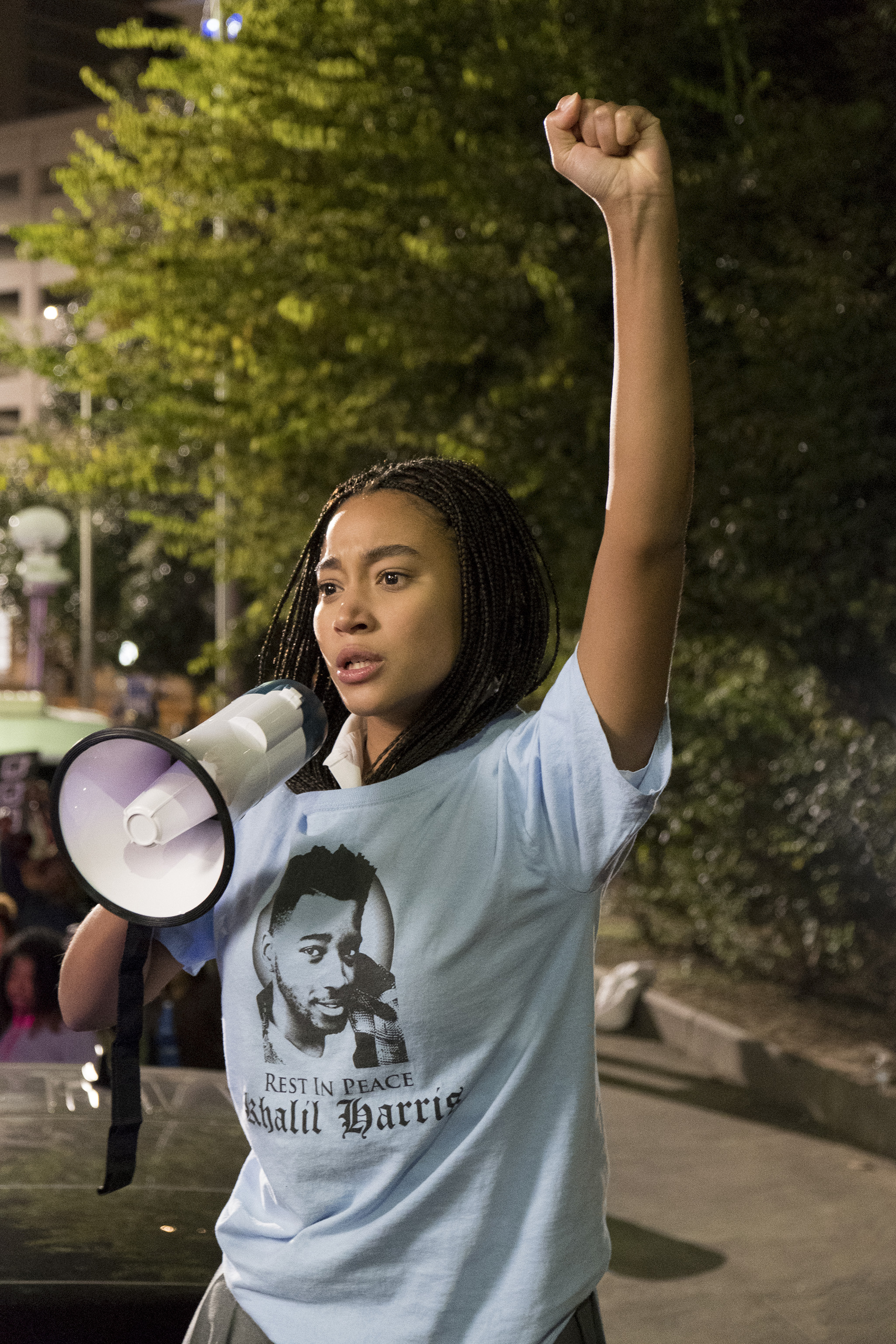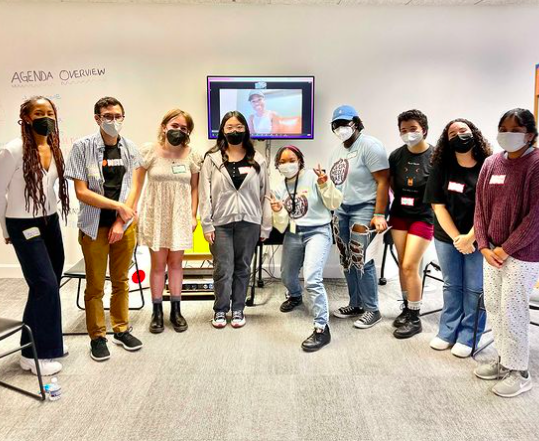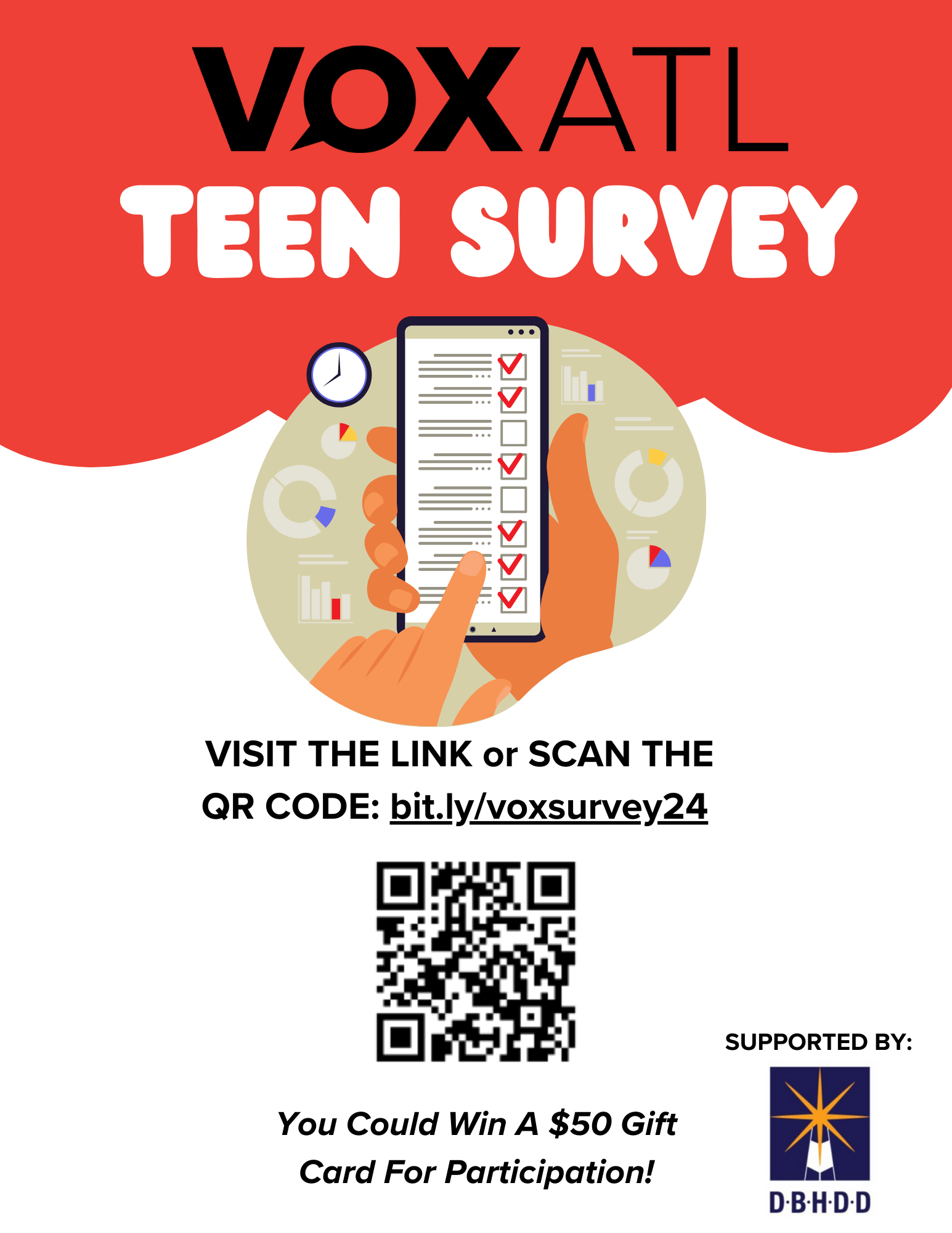Being black in America is being afraid every moment of every day that you will be the next causality of a white man’s ignorance. And being a young black woman terrified into silence by this fear guarantees that, inevitably, you will be.
The new film “The Hate U Give” tells a narrative about police brutality that snatches it from the sensationalized headlines of the media and the forefront of controversy to place it in its real-world context and the wreckage these acts of violence leave behind. The narrative, however, is approached uniquely from the eyes of a young black girl named Starr. It’s told in a coming of age-esque storyline that integrates the common trials and tribulations of adolescence with the greater struggles black women collectively face just attempting to exist in America.
In the film, Starr grapples with issues more complex than boyfriend troubles and persistent pimples. Unlike ornery high school teachers and nosy parents, Starr’s antagonists can’t be summed up as a single being or individual. Society and prejudiced institutions are her enemies, or rather, she the enemy of them. In a society that weaponizes both the existence and the voices of black youth, the film explores what it truly means to speak up, and the ultimate cost of the calamity that closely follows.
The film portrays complex and emotionally traumatic concepts. You experience exactly what it means to have your entire existence summed up by a mugshot, or loved ones becoming victims to the prejudice that systemic racism breeds. “The Hate U Give” plays out our most terrible nightmares, the horrors that we pray never come to fruition, while also acknowledging that it is the reality black communities face every day without shying away from the terrors and tragedies of it. The film is devastatingly true to the contemporary experience of Black America and epitomizes the struggles and adversity today’s black youth battle.
In this regard, Starr’s existence is understandably more complex than that of her peers. She lives in an existence divided until her two worlds collide by tragedy. Her coming of age story is linked to devastation and violence, a reflection of the authentic realities of America’s black youth that live in communities tormented by brutality and persecuted by institutions rooted in prejudice.
The film’s central theme revolves around the “T.H.U.G L.I.F.E.” acronym coined by 2PAC that not only describes the existence of the youth culture but also how society ultimately treats black youth: “The Hate U Give To Little Infants F**ks Everyone.” Essentially, its message is that the hate society gives to black youth circles back around — it is violence and devastation, mutually assured destruction. It alludes to a cycle of hate, crime and death. A pattern that has played on for generations within America.
However, the film’s approach to black culture is nuanced and comprehensive. Starr is introduced to us in the context of her “blackness,” whether it be through the Jordans on her feet, culturally influenced dialect and slang, or the black pop-culture references she makes with Kendrick Lamar blaring as the background music. This is later juxtaposed to the shifted environment and mannerisms of “Starr Version 2,” who possesses an internalized fear of her blackness and culture that is so often categorized as “ghetto.”
This tactic, called “code-switching,” is one that a great many black girls are all too familiar with. The basis of it amplifies the notion that to be accepted in a society where whiteness is next to godliness, you have to sacrifice the cultural aspects of your ethnicity that make up so much of who you are. So many of us, knowingly or not, do this in order to be perceived as valid individuals of worth and value, and to thwart the prejudices of the people who would otherwise see us as something stuck to the bottoms of their shoes. So often in intellectual settings, black girls become the object of disgust and perplexity whenever we dare voice our opinions, ever aware that an ounce of too much passion can send our points of argument into “angry black girl” territory. Black women are constantly forced to conform to white expectations in order to counteract stereotypes that date all the way back to the Jim Crow days, which contextualizes Starr’s experiences in the film with real-world connection.
In fact, throughout the film, there are many points that are all too real to life, such as the scene in which Starr records officers aggressively detaining and threatening a man while one of them reaches for his weapon. The officers command her to “put down the phone,” until they realize that a crowd has gathered with similar intentions. It conveyed the reality that now, all of our eyes are on them and police officers are finally being held accountable to the community that their institution systemically terrorized for decades. But it took that threat of exposure, of truth, to finally find an effective preventive tool. Today, the black community’s power lies not in the magazine of a gun, but at the tips of its fingers. The most effective ammunition we have is the ability to broadcast what happens when authority figures think no one is watching. And, as the film portrays, this is a game-changing weapon.
Furthermore, at a different point in the film, Starr is brought in for questioning immediately after the death of her childhood friend Khalil, who had been murdered before her eyes. Despite this, the officers treat Starr callously, regarding her as if she is a dehumanized object, and at worst, as if she is a criminal on trial. They never give her time to grieve and question her as if she was an accessory to the crime that was committed. This particularly attests to the reality that, in America, black children are never just children, and that black communities affected by tragedy are never allowed to mourn their dead before someone accuses the loved one lost of being a felon.
The criminalization of Khalil, and those countless souls that came before him plays a powerful component of the film’s dialogue. It manages to give life to the horror, the rage of having someone tell you, as your loved ones are shot down and pumped with lead, that the one holding the smoking gun’s life matters too. The controversy Khalil’s death sparks within the film portrays this real-world occurrence without flaw.
In our society, black lives and black bodies are always on display for the world to see and dissect, to be the subject of controversy and debate. Sometimes it’s hard to remember that these people that we see shot dead on our televisions went to school with us, had the same last names and went to the same stupid overpriced coffee shops. It’s hard to remember that these people had family, had friends, had loved ones. Sometimes it’s hard to truly remember that these people had lived.
The film plays into this notion seamlessly, interweaving the outrage that spurred from Khalil’s death with the tiredness that this endures to be our realities. It almost seems to say to us, why should every memorial for our dead be a march? Every funeral procession a protest? Why should black carcasses be a feast to the vultures of the media, their innards on the display for the whole world, while mothers cry themselves to sleep?
The film’s approach to power is unique, nuanced and most interestingly, the battle fought for its reclamation in the end offers no rectification or resolution, creating a deeper layer to Starr’s narrative and analysis to the current state of the black community. The power in Starr’s voice is not that it’s a resolution hailing victory, but instead a catalyst for change. Its power conveys that even though it feels as though we’re shouting into the void, our screams and cries are felt in unison, and they kindle something so much greater than us. “The Hate U Give” does not promise a resolution to society’s issues of systemic racism and police brutality, and it doesn’t offer a solution. Instead, the film answers our cries in solidarity and joins yet another voice screaming into the face of America for change.
For me, “The Hate U Give” taught an important lesson: that it is OK to be an angry black girl. It is OK to be angry. Because, collectively within the black community, we have every right to be. But as fierce of a tool anger is of catalyzing change, its power to make waves has the equal potential to drown everything and everyone with it. It is about finding the passion within us. The passion for love, the passion for rage, the passion for grief, the passion to speak out. The film seems to take our bloody hands as we pull ourselves together and prepare for the fight of our lives, for our lives, promising that we will never fight alone.
It promises that this is only the beginning.
Starr’s character, fictional or not, becomes the first example of a young black woman of my generation that I have ever witnessed leading an insurrection for the liberty of my people. She is the first that has reclaimed the power of her voice to scream to the world that we are willing to die for the things we live for. Starr is one of the first revolutionary black girls that has seized her courage to take a stand for this generation of black youth.
But I assure you, as thousands upon thousands of young black women experience this film, she will not be the last.
Erin Davis is a journalist and photographer who closely follows the Atlanta arts and entertainment scene.




